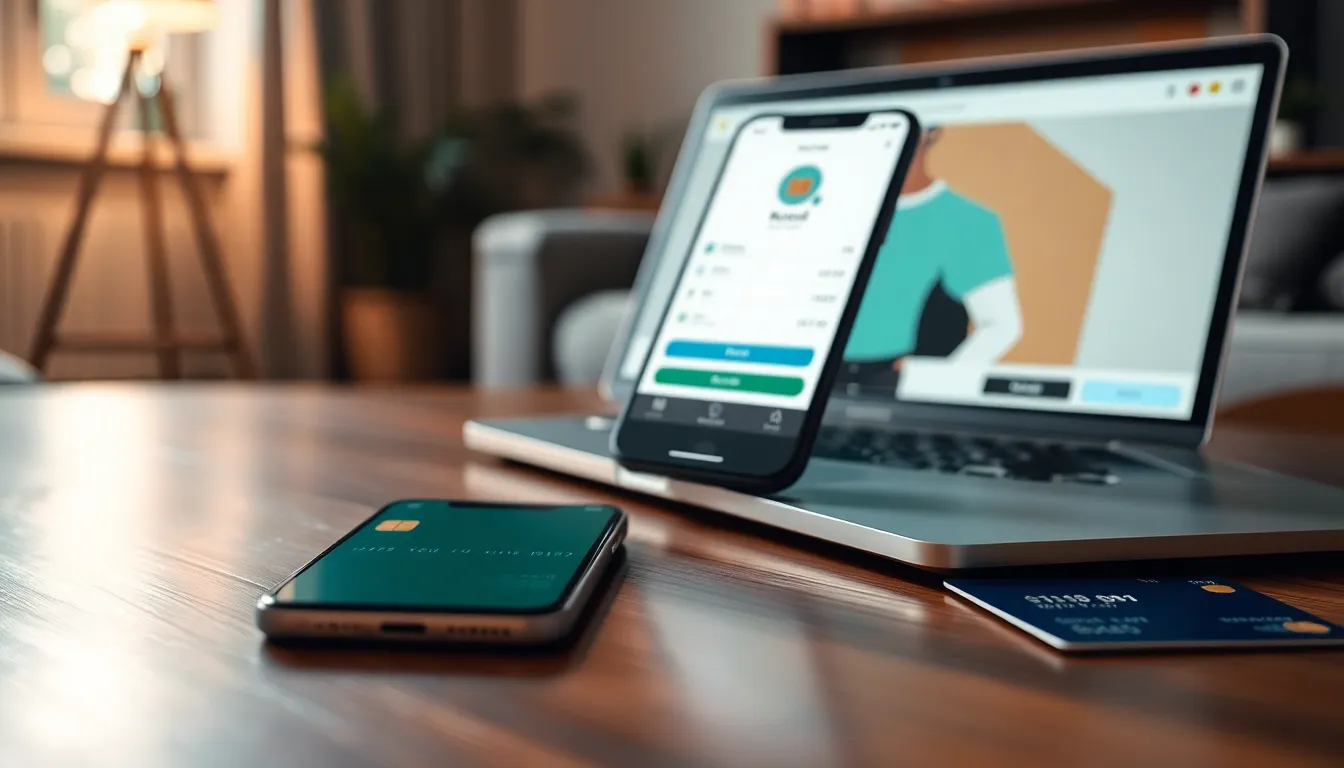In today’s digital landscape, secure payments have become a top priority for consumers and businesses alike. As online transactions surge, so do the threats posed by cybercriminals. Ensuring that sensitive financial information remains protected is crucial for building trust and safeguarding against fraud.
With advancements in technology, various secure payment methods have emerged, offering enhanced safety features that make it harder for hackers to exploit vulnerabilities. From encryption to tokenization, understanding these security measures can empower users to make informed choices when it comes to their financial transactions. As the world shifts toward a cashless society, grasping the essentials of secure payments is more important than ever.
Table of Contents
ToggleUnderstanding Secure Payments
Secure payments are crucial in minimizing fraud and protecting personal information during transactions. With digital transactions on the rise, understanding secure payment solutions has become essential for consumers and businesses.
Importance of Secure Payments
Secure payments safeguard sensitive financial data, ensuring that information remains confidential. The increasing frequency of online fraud highlights the necessity of adopting secure payment methods. Trust is vital in digital transactions, and secure payments help maintain consumer confidence. Moreover, regulatory compliance mandates, such as the Payment Card Industry Data Security Standard (PCI DSS), necessitate secure payment practices to avoid costly breaches and penalties.
How Secure Payments Work
Secure payments rely on advanced technologies to protect transaction data. Payment encryption converts sensitive information into unreadable code during transmission, protecting it from interception. Tokenization substitutes personal data with a unique identifier or token, ensuring the actual data remains secure. Multi-factor authentication adds another security layer by requiring users to verify their identity through multiple means. These measures collectively enhance protection, making secure payments safe for consumers and merchants.
Types of Secure Payment Methods

Secure payment methods are essential for protecting sensitive financial information during transactions. Various options are available, each providing distinct security features.
Credit and Debit Cards
Credit and debit cards represent widely accepted payment options, offering consumer protection measures. Cards typically incorporate EMV chip technology, which encrypts data and reduces the risk of counterfeit fraud. Many banks also provide zero liability policies for unauthorized charges, ensuring that consumers are not held responsible for fraudulent transactions. Encryption methods further enhance the security of card transactions, making it harder for unauthorized entities to access sensitive information.
Digital Wallets
Digital wallets, such as PayPal, Apple Pay, and Google Pay, enable users to store payment information securely. They use tokenization to replace sensitive data with unique identifiers, minimizing exposure during transactions. Digital wallets often support biometric authentication, like fingerprint or facial recognition, adding an extra layer of security. Users can conduct transactions without revealing their credit or debit card details, reducing the risk of fraud.
Cryptocurrencies
Cryptocurrencies like Bitcoin and Ethereum provide a decentralized payment method that is inherently secure. Blockchain technology underpins these currencies, ensuring that transactions are recorded transparently and cannot be altered. Cryptocurrencies promote secure transactions through cryptographic techniques that protect user identities and transaction details. Although volatile, cryptocurrencies offer users an innovative option for secure payments, especially for cross-border transactions where traditional banking may pose risks.
Best Practices for Secure Payments
Implementing best practices for secure payments helps protect sensitive information. Adopting effective security measures ensures safety during financial transactions.
Encryption Techniques
Encryption techniques safeguard sensitive data during transmission. They convert information into unreadable code, making it inaccessible to unauthorized users. Common encryption standards include AES (Advanced Encryption Standard) and RSA (Rivest-Shamir-Adleman), both widely used in online transactions. Utilizing HTTPS, which employs SSL (Secure Socket Layer) or TLS (Transport Layer Security), ensures secure communication between users and payment gateways. Regularly updating encryption protocols enhances security and counteracts evolving cyber threats.
Multi-Factor Authentication
Multi-factor authentication (MFA) adds a critical layer of security. It requires users to provide two or more verification factors before accessing their accounts. Common factors include something the user knows (password), something the user has (smartphone app or hardware token), and something the user is (biometric data like fingerprints). Implementing MFA significantly reduces the risk of unauthorized access, as it complicates the authentication process for cybercriminals. Companies adopting MFA protocols demonstrate commitment to protecting customer data, building trust and confidence in their payment systems.
Common Threats to Secure Payments
Various threats jeopardize secure payment processes, making awareness and vigilance essential for consumers and businesses. Understanding these threats helps mitigate risks associated with financial transactions.
Phishing Scams
Phishing scams utilize deceptive emails or messages to trick individuals into divulging personal information. Cybercriminals often impersonate trusted entities, using urgent language to create a sense of urgency. These scams frequently direct victims to counterfeit websites that resemble legitimate sites, where they unknowingly enter sensitive details like credit card numbers or login credentials. According to the Anti-Phishing Working Group, the frequency of phishing attacks has surged by over 220% in recent years, underscoring the need for robust anti-phishing measures. Implementing training for employees and consumers about recognizing suspicious messages and verifying sources can greatly reduce vulnerability to these attacks.
Data Breaches
Data breaches occur when unauthorized individuals gain access to confidential information stored by organizations. Breaches expose sensitive data, including names, addresses, and payment details, potentially resulting in identity theft and financial loss. The 2022 Cost of a Data Breach Report by IBM revealed that the average cost of a data breach reached $4.35 million, emphasizing the financial impact on businesses. Organizations should prioritize implementing strong cybersecurity measures, such as advanced encryption methods and regular security audits, to prevent breaches. Strong access controls, ongoing employee training, and incident response planning further enhance defenses against potential threats.
Secure payments are no longer just an option; they’re a necessity in today’s digital economy. As online transactions continue to grow, so do the threats posed by cybercriminals. Consumers and businesses must prioritize understanding and implementing secure payment solutions to protect sensitive financial information.
With various methods available—from credit cards with EMV technology to digital wallets and cryptocurrencies—there’s a solution for every need. Adopting best practices like encryption and multi-factor authentication can significantly enhance security and build consumer trust.
Staying informed and vigilant against potential threats is crucial in maintaining a secure payment environment. By embracing these security measures, both consumers and businesses can navigate the cashless future with confidence.




